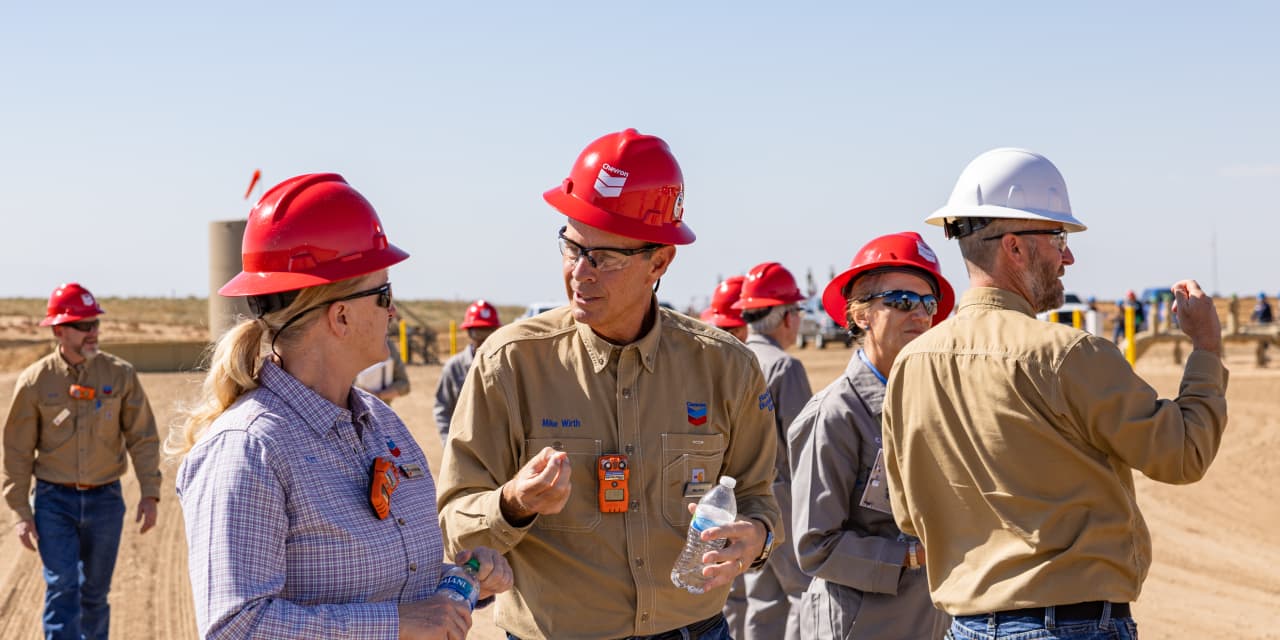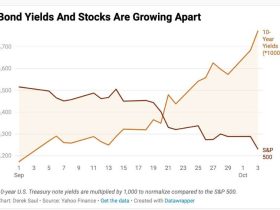Earlier this year, with Iranian navy helicopters closing in, the Advantage Sweet, a 274-meter-long crude-oil tanker cruising in international waters through the Gulf of Oman en route from Kuwait to Houston, sent out a distress signal.
To no avail.
The next day, April 28, Iranian state TV released a chilling video showing armed, masked commandos rappelling down from their chopper to seize the ship, one of them raising his fist in apparent triumph.
Three months later, the U.S. Navy guided-missile destroyer USS McFaul received another distress call, this time from the Richmond Voyager, a very large crude carrier also in the Gulf of Oman. An Iranian naval vessel was stalking the ship and subsequently “fired multiple, long bursts from both small arms and crew-served weapons,” the Navy said, strafing the ship, with several rounds hitting the ship’s hull near crew living spaces. Fortunately, the ship sustained no casualties or significant damage, and the McFaul drove off the Iranian navy vessel.
Yes, this high-stakes geopolitical drama sits squarely in the remit of the Pentagon and the State Department. But as both tankers were managed or chartered by oil giant
Chevron
(ticker: CVX), it falls directly in the lap of Mike Wirth, Chevron’s CEO, for whom this is almost just another day at the office.
We’ve all heard how manifold the supply chain is for a company like
Apple
(AAPL) or
Ford Motor
(F), but when it comes to sheer global complexity, nothing comes close to running an international integrated oil-and-gas company like Chevron and other oil majors like archrival
Exxon Mobil
(XOM),
BP
(BP), and
Shell
(SHEL).
Chevron’s capital ($14 billion in capital expenditure), manpower (43,846 employees), scale (more than 100 countries), technology, chemistry, and processes (6,900 patents or patents pending)—and, yes, the accompanying political risk, including in the company’s home state of California—is ginormous. But when all of this works—as it is now, with the price of crude oil spiking from $67 a barrel in late June to $93 this past week—there are tens of billions of dollars to be made for shareholders. And Chevron has stood out from the pack in recent years.
“Chevron has done a better job over the last decade on capital allocation,” says Roger Read, an analyst at Wells Fargo, who has an Overweight rating on Chevron stock. “They’ve invested in their organic businesses. They’ve walked away from acquisitions when they didn’t make sense but also made the right deals.”
Read points to Chevron’s estimated free cash flow per share of $11.57 this year and $16.11 in 2024. Return on average capital employed, which indicates how profitable a company’s investments are, hit 22.7% last year. It has dipped to 15.3% this year because oil prices have been down, but, as Read says, a “midteens performance is a very good result.”
And Chevron stock has done well since Wirth took the reins on Feb. 1, 2018, outperforming the
Energy Select Sector SPDR
exchange-traded fund (XLE), of which Chevron is a 18% component, and the
SPDR S&P Oil & Gas Exploration & Production
ETF (XOP). Chevron is lagging behind the S&P 500 index during Wirth’s tenure, but it handily outperformed the index last year—which is when Warren Buffett loaded up the
Berkshire Hathaway
(BRK.A) truck with Chevron stock.
Buffett first bought some 48 million shares of Chevron in 2020s fourth quarter, then massively boosted his stake to 159 million in the first quarter of 2022 and topped off the holding to 165 million shares in the third quarter of last year. Since then, Buffett has pared back to 123 million shares, still a 6.3% stake worth over $20 billion. I recently wrote about a bet between Buffett and Wirth, with Buffett emailing me, “I entered into this speculation knowing Mike was far smarter than I am in finding oil and gas and who knows what other mental endeavors.”
Chevron and
Occidental Petroleum
(OXY) were Buffett’s two big oil plays as of late, with Exxon being conspicuously absent—although Exxon outperformed Chevron over the past year. “It’s not so much that Chevron did anything wrong; it’s more like Exxon corrected course,” Read explains.
To compete with Exxon and myriad other players, Chevron operates in a number of challenging environments, including Venezuela.
You may not realize it, but that country has the world’s largest oil reserves (bigger than Saudi Arabia), with some 17.5% of the world’s supply (303.8 billion barrels). Venezuela is also a barely functioning basket case and under sanctions by the U.S. Treasury and State Department.
How the heck does Chevron operate there?
“We’ve been in Venezuela for the better part of the last 100 years,” Wirth told me in an interview as part of our At Barron’s series. “Most other Western companies have actually left. We’ve got a number of Venezuelan employees, and we’re believers in the country. The rules that had been put in place by the U.S. government have recently been modified to encourage the flow of some of the wealth from Venezuela to the U.S. Funds from those oil exports can only be used for prescribed purposes. We’ve had to put in place a financial architecture to ensure that the cash [goes] to pay taxes, royalties, [and] legitimate expenses. We’re seeing Venezuelan oil come here, which has helped improve U.S. energy security.”
Then there’s Kazakhstan, where Chevron has a significant presence but had to reduce production for a time last year after a spate of violence. Also last year, the company pulled out of Myanmar because of “violence and human rights abuses.” Chevron has a 39.66% stake in Israel’s mega-Leviathan gas field, located some 80 miles offshore from Haifa. (Fun fact: Chevron’s predecessor discovered the massive Ghawar Field in Saudi Arabia, with its subsidiary becoming the predecessor of Saudi Aramco.)
That laundry list of locales reminds me of what an oil analyst once told me about yet-to-be discovered oil. “Oh, there’s plenty out there still,” he said. “Lots in Libya, Iran, and Iraq.” All the garden spots, I thought.
Chevron does operate in some friendlier environs, Australia being one of them, except that the company recently had to face down labor strife at its massive Gorgon liquid-natural-gas facility off the coast of northwest Australia, which provides much of Japan’s natural gas and some 5% of the world’s supply. In late September, Chevron and striking union workers agreed in principle to a deal that will raise wages and improve job security.
A major portion of Chevron’s production, though—39.4%—is right here in the good ol’ USA, including in the Permian Basin, which has created its own set of worries. Though Tom Loughrey, president of oil-and-gas research firm FLOW Partners, calls Chevron’s acreage in the Permian “one of the best oil and gas assets in the world,” he says that “Chevron has a relatively small acreage position for the size of their company.” And he says that “their performance is going down as their wells are getting closer together. Their capital efficiency has been dropping.”
Read disagrees. “We don’t worry about Chevron’s performance in the Permian,” he says. “Yes, some of the results may be underwhelming. The market had reasons for doubt. But we recognize there’s good and bad quarters, relative to expectations, relative to the most recent performance.”
Chevron pioneered the oil business in California through its early incarnations Star Oil and Pacific Coast Oil, the latter of which John D. Rockefeller bought in 1900 for a bargain $761,000, or $27.8 million in today’s dollars. Rockefeller then formed Standard Oil of California, which went on to become Chevron, later merging with Gulf Oil (1984) and buying Texaco (2001) and Unocal (2005). Chevron has kept its headquarters in California, that bluest of blue states, for 144 years, which made it particularly galling when earlier this month, its home state’s attorney general, Rob Bonta, sued five oil companies; Exxon, Shell, BP,
ConocoPhillips
(COP), and Chevron—accusing them of knowingly downplaying the damaging effects of fossil fuels.
Wirth was raised in purple state Colorado. His father worked at Coors, then owned by the conservative Coors family. Wirth attended the University of Colorado (majoring in chemical engineering) in crunchy granola Boulder, so he knows all about the game of red state/blue state.
“Climate change is real, there’s no doubt about it,” Wirth says. “Our company accepts the findings of the IPCC [Intergovernmental Panel on Climate Change of the United Nations] and is taking steps to decarbonize our business [to] help address the challenge. We’ve committed to spend $10 billion over just the next few years on hydrogen, renewable fuels, carbon capture and storage. For those who say, ‘You’re not doing enough,’ throwing more money at technologies that have not yet been proven at scale, that are not cost competitive, doesn’t necessarily make them better, it just throws more money at something.”
“There [are] millions of people who need access to energy in a cost-effective, clean, as well as a reliable way,” Chevron board member Baroness Dambisa Moyo told me in an At Barron’s interview earlier this year.
Some people have moral qualms about investing in oil stocks, which is understandable. Truth is, though, if we shut down Chevron et al., our economy would shut down, too. Looking just at the costs of what Chevron does—producing and selling hydrocarbons—without looking at the benefits reminds me of what Buffett’s partner Charlie Munger told me about Berkshire’s investment in
Coca-Cola
(KO):
“People have to take in this immense amount of water every day or they will die. One of the things you can do to add to daily pleasure is flavor the water and get a tiny touch of stimulation from it. That basically does more good than harm, in my opinion….If the average life on the planet is one week shorter because everybody is drinking soft drinks, I think that’s a choice people ought to be allowed to make.”
Munger continued, “What could be more asinine than making a judgment about something without taking into account both the advantages and disadvantages? What kind of a nut would just look at one side and not the other?”
Wirth and his investors have discovered that some folks may be doing that, bringing big risk right to Chevron’s front door.
Write to Andy Serwer at andy.serwer@barrons.com and subscribe to hisAt Barron’s podcast
Read the full article here













Leave a Reply